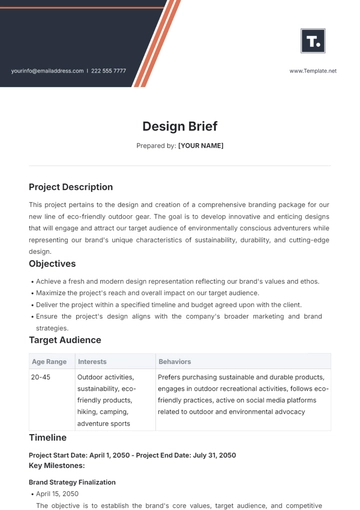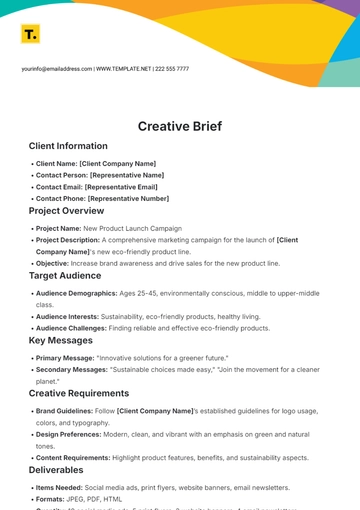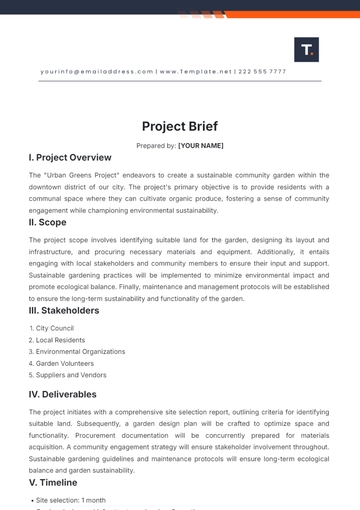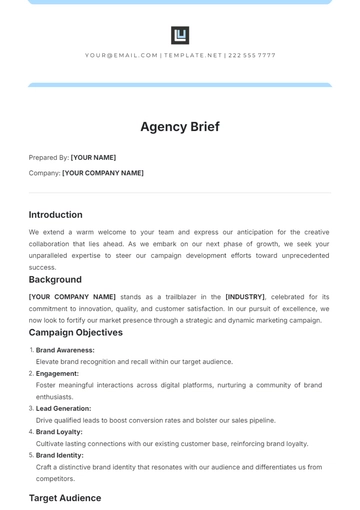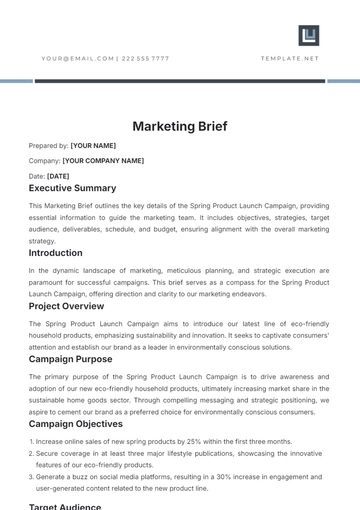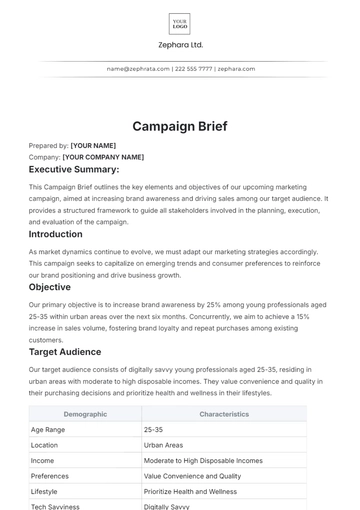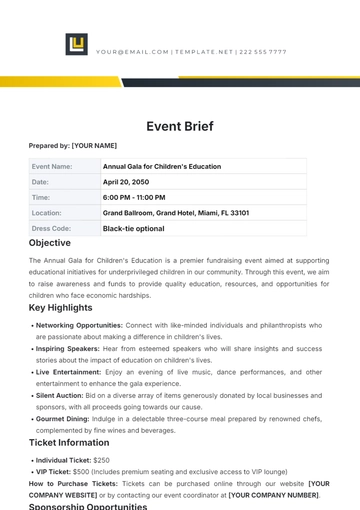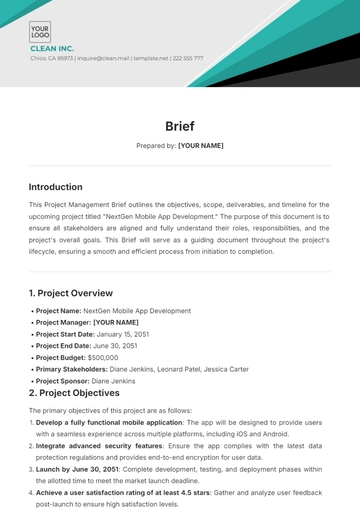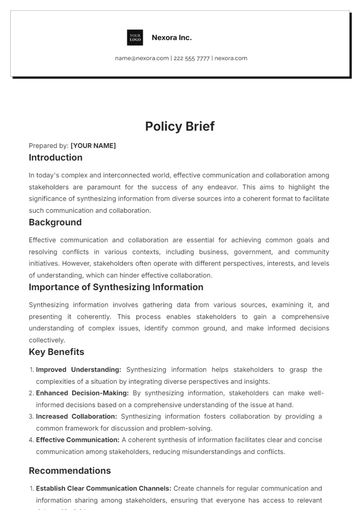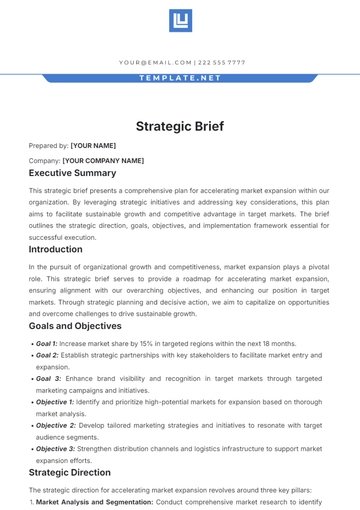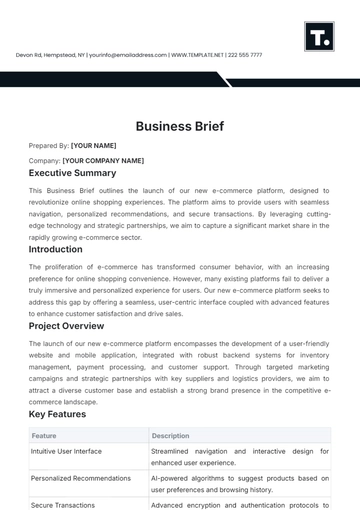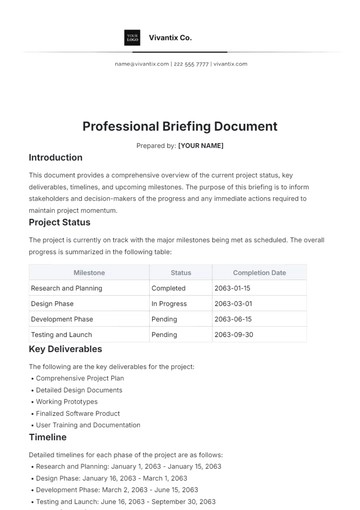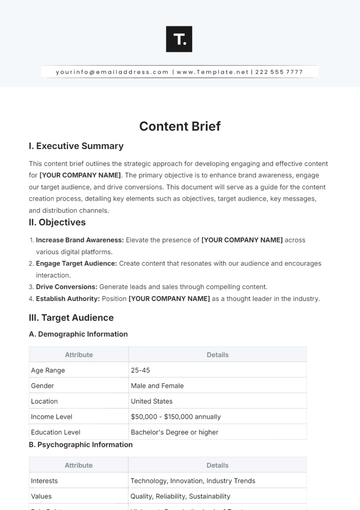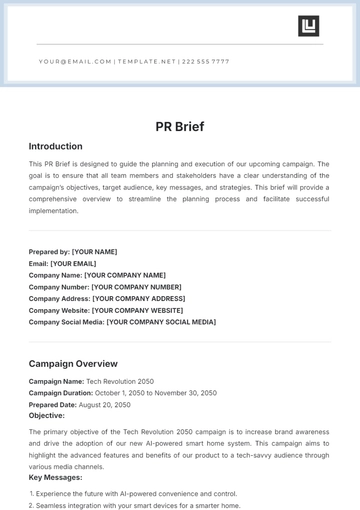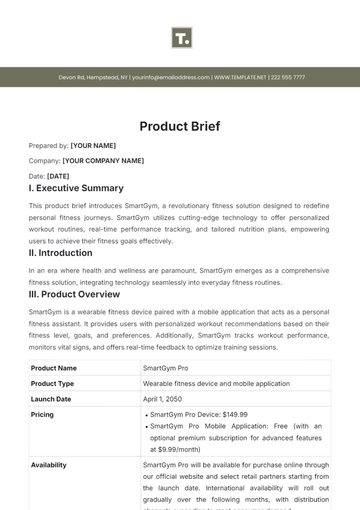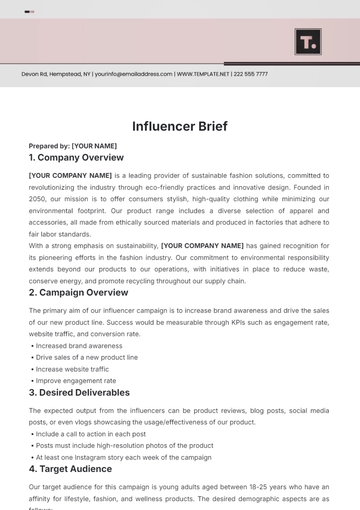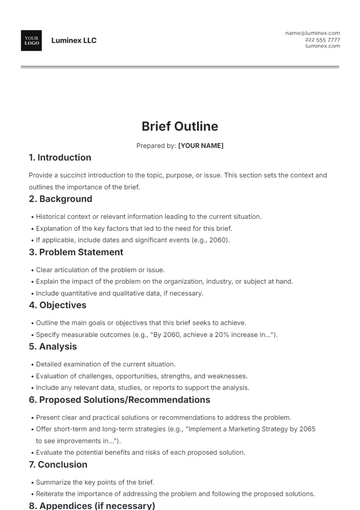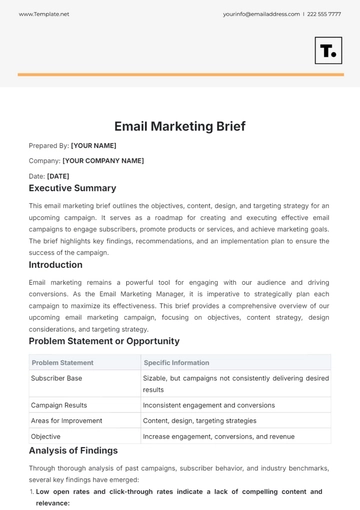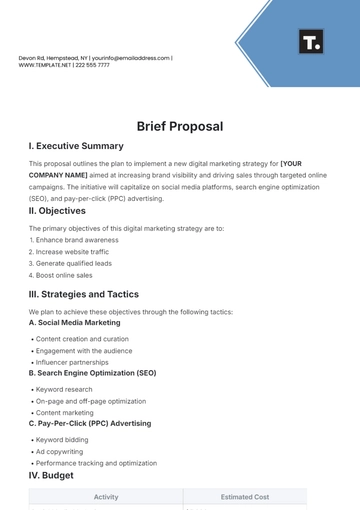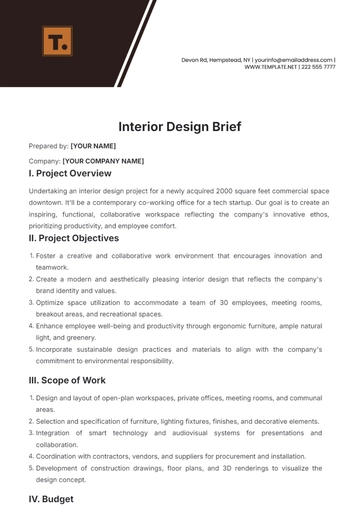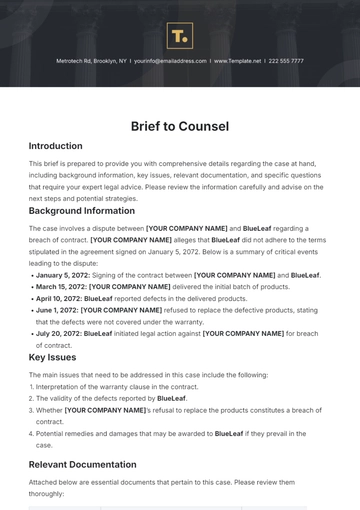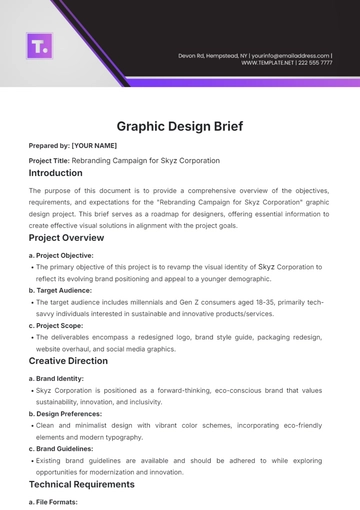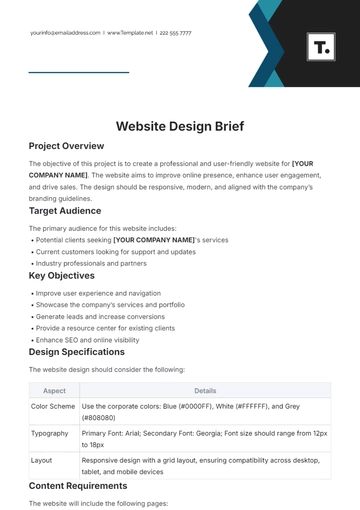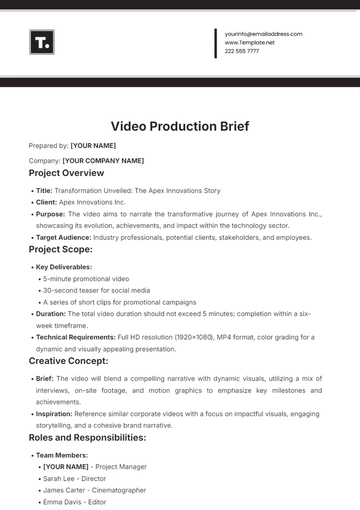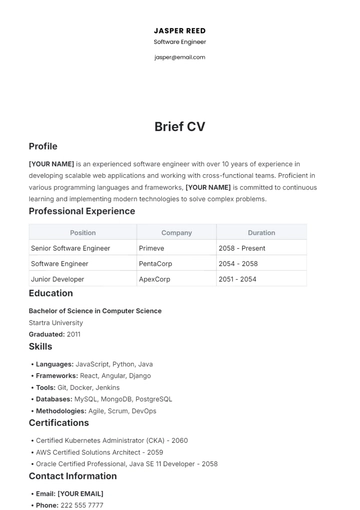Free Business Case Brief

I. Executive Summary
The objective of this Business Case Brief is to evaluate the feasibility and strategic benefits of expanding [Your Company Name] into new regional markets in 2060. This expansion aims to leverage emerging opportunities in international markets to enhance growth and competitive advantage.
II. Market Analysis
Overview
The new markets under consideration include regions with high economic growth potential and increasing demand for [Your Company Name]'s products. The analysis will focus on three key areas:
Economic Indicators: GDP growth, consumer spending, and market stability.
Competitive Landscape: Major players, market share, and competitive intensity.
Regulatory Environment: Legal requirements, trade rules, and entry barriers.
Market Indicators
Region | GDP Growth (%) | Consumer Spending | Major Competitors | Market Entry Barriers |
|---|---|---|---|---|
Region A | 6.5 | High | Innovate Inc., Apex Corp. | Moderate |
Region B | 5.8 | Moderate | Beta Ltd., Zenith Group | High |
Region C | 7.2 | High | Elite Enterprises, Nova Technologies | Low |
III. Strategic Objectives
The strategic objectives for this market expansion are:
Increase Market Share: Capture a significant market share in 3 years.
Revenue Growth: Boost annual revenue by 15% through regional expansion.
Brand Positioning: Boost your global brand recognition.
Key Performance Indicators (KPIs)
Market Share: Target 10% market share within 3 years.
Revenue: Increase by $50 million annually.
Brand Awareness: Achieve 30% higher brand recognition.
IV. Financial Projections
Budget Overview
The estimated budget for the market expansion includes costs for market research, marketing, logistics, and local operations.
Table: Financial Projections
Expense Category | Year 1 ($M) | Year 2 ($M) | Year 3 ($M) | Total ($M) |
|---|---|---|---|---|
Market Research | 5.0 | 2.0 | 1.0 | 8.0 |
Marketing | 10.0 | 12.0 | 14.0 | 36.0 |
Logistics | 7.0 | 8.0 | 9.0 | 24.0 |
Local Operations | 6.0 | 7.0 | 8.0 | 21.0 |
Total Investment: $89 million
Expected Returns
Based on market analysis and projections, the expected return on investment (ROI) is estimated at 20% annually.
V. Risk Analysis
Identified Risks
Market Risk: Volatility and economic downturns in new markets.
Operational Risk: Regulations and supply issues pose challenges.
Financial Risk: Exchange rate fluctuations and unexpected costs.
Mitigation Strategies
Diversification: Spread investments across multiple regions to reduce risk.
Local Partnerships: Collaborate with local firms for regulatory and market solutions.
Insurance: Use financial instruments to hedge against currency and economic risks.
VI. Implementation Plan
Key Milestones
Market Entry Strategy: Develop and finalize the market entry strategy by Q1 2060.
Operational Setup: Establish local operations and partnerships by Q3 2060.
Marketing Launch: Begin market-specific marketing campaigns by Q4 2060.
Implementation Timeline
Milestone | Start Date | End Date | Responsible Party |
|---|---|---|---|
Strategy Development | Jan 2060 | Mar 2060 | [Your Name] |
Operational Setup | Apr 2060 | Sep 2060 | [Your Company Name] |
Marketing Campaign Launch | Oct 2060 | Dec 2060 | [Your Name] |
VII. Conclusion
Expanding [Your Company Name] into new markets presents a substantial opportunity for growth and increased market presence. With a comprehensive strategy and risk mitigation plan, this expansion is poised to deliver significant benefits and achieve strategic objectives.
For further details or inquiries, please contact [Your Name] at [Your Email] or [Your Company Email].
- 100% Customizable, free editor
- Access 1 Million+ Templates, photo’s & graphics
- Download or share as a template
- Click and replace photos, graphics, text, backgrounds
- Resize, crop, AI write & more
- Access advanced editor
Empower your business decision-making with Template.net's Business Case Brief Template. This editable and customizable tool provides a structured framework for presenting compelling arguments. Seamlessly editable in our Ai Editor Tool, it offers flexibility to adapt to varying business scenarios. Streamline your case development process and communicate key insights effectively with this comprehensive solution, ensuring informed decisions that drive success.
